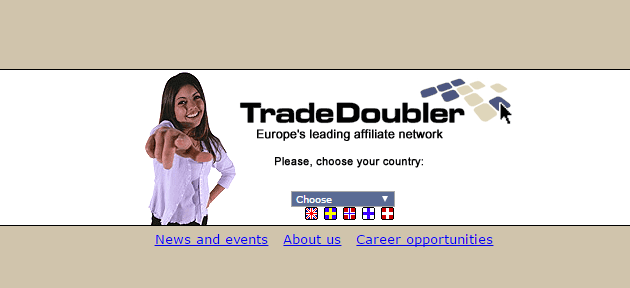Written by Antoni Saurina
Índice
Affiliate networks are platforms that bring together a large number of websites, commonly called publishers, where advertisers can place their ads for a certain amount.
The main actors in this system are:
- Advertisers: are users who want to advertise their web pages and pay for such advertising.
- Affiliates: they are the owners of the websites where the advertisers’ ads will be published.
- The platform: it is the one that puts advertisers and affiliates in contact, acting as an intermediary between the two parties. They also provide the technology to measure results.
The initial approach is that an advertiser who wants to promote his website, adds it to the platform, specifies some general conditions such as the objective of the campaign, the amount of remuneration, payment methods, etc. and provides creatives, such as banners, data files, text links, etc. Interested affiliates request to add the ads to their publishers. If the advertiser sees it convenient, it accepts the supports so that the affiliate can incorporate its creativities in the web. Both advertisers and affiliates will have all the data and statistics related to the campaigns on the platform.
For example, in the case of an online store, the advertiser can make available to affiliates a data file, similar to the one used in Google AdWords campaigns for product listing ads. With this file, affiliates will incorporate the information into their web pages to advertise the products sold by the advertiser. For each sale achieved through the affiliate’s website, the advertiser will pay a certain amount to the publisher.
Affiliate networks have been around since the beginning of Internet advertising, being one of the first ways to advertise. In the beginning, one of its advantages was that an advertiser could reach many publishers quickly and easily.
Affiliate platforms were one of the first systems for advertisers to reach a large audience.
Over time, other advertising platforms have appeared that are now better known, such as Google AdWords. Even so, affiliate platforms are still a very interesting complement to traffic, lead or sales acquisition strategies.
Most networks now have high quality websites that any advertiser would want to appear on. In addition, they have been able to adapt very well to the needs of advertisers, incorporating payments through very interesting remuneration models such as cost per lead (CPL) or cost per acquisition (CPA). In the CPL model, the advertiser pays only for the number of users who have agreed to give up their data. In the case of CPA, the advertiser pays a percentage of the amount of the sale achieved. Unlike other classic models such as cost per click (CPC) or cost per thousand impressions (CPM), profitability is assured with these types of remuneration.
CPL and CPA are the most interesting remuneration models in affiliate networks and differentiate them from other advertising platforms.
What does a website have to be like to advertise on affiliate networks?
To advertise a website or online store in an affiliate network it must meet certain requirements, and it must be taken into account that to get contacts or sales it is not enough to have a website in any way. For example, in an online store, sales come after gaining notoriety and trust from users.
According to the networks consulted, most require websites with at least 20,000 visits, a minimum of one year old, an investment budget that allows the campaign to get off the ground and a 100% online conversion process. This does not mean that a new website or one with fewer visits cannot advertise, but that it will not be able to run campaigns with all the available payment types, such as CPL or CPA, leaving only the massively used CPC or CPM available.
To advertise a website on affiliate networks through CPL or CPA it is necessary to meet certain quality requirements.
This type of requirement is beneficial for all network players, advertisers, publishers and the platform itself. If they did not exist, there would be websites that would provide nothing to the user and would take advantage of the traffic provided by the platform. In addition, there would be no benefit to websites that lend themselves to adding ads.
Initial and monthly fee
In addition to the aforementioned requirements, there are other barriers to entry, in this case economic. Unlike other advertising platforms, some affiliate networks typically bill both upfront and monthly fees.
On the one hand, the entry fee is justified by the need to set up the account, support to learn how to use the interface that manages the ads or to configure the conversion pixel. In addition, as a general rule, an account manager is available to answer any questions that may arise.
On the other hand, the monthly fee corresponds in most cases to the use of the platform and access to the affiliate network.
In all cases and depending on advertiser involvement, investment and campaign results, these quotas could be modified or eliminated.
What is the role of agencies in affiliate networks?
Agencies, as experts in online advertising, can advise clients to find the most suitable affiliate network for each case. Each network has different web pages and depending on the subject matter, some will be more powerful in certain sectors than others. Therefore, a customer in the fashion industry will be interested in the platform that can offer the most fashion-themed and high quality support.
The negotiation of quotas is also important. The agencies provide numerous clients to the different networks and have more permanent contact, so they have more power to negotiate more economical fees that help to more easily monetize the campaigns.
Finally, the agency is in charge of the management and optimization of the campaign, analyzing the results obtained and proposing solutions to obtain better results.
Conclusions
Affiliate networks can be a good option within our online marketing strategy. Whether you are looking for visitors or profitability, these platforms offer customized solutions to help you achieve your goals. It is a perfect complement to not depend on a few means of traffic and it must be taken into account that diversifying our traffic sources is an almost mandatory strategy to overcome future problems that may arise with any of them.
It should also be taken into account that this type of advertising is designed for the medium to long term, although one-off campaigns can be carried out, it is not usually effective or profitable to carry out tests, especially given the aforementioned quotas.


